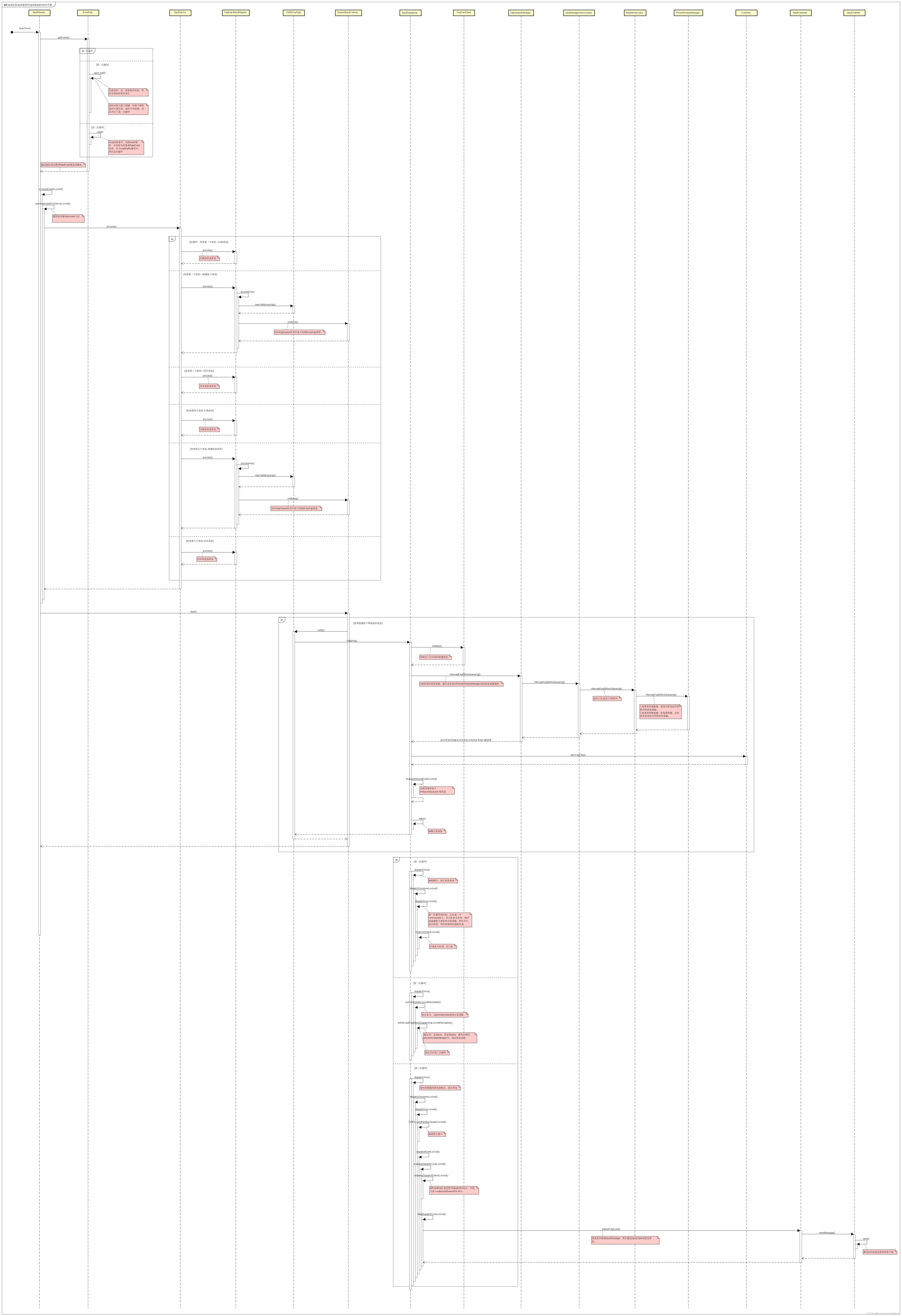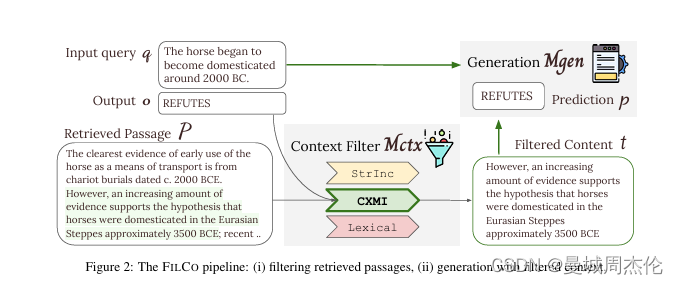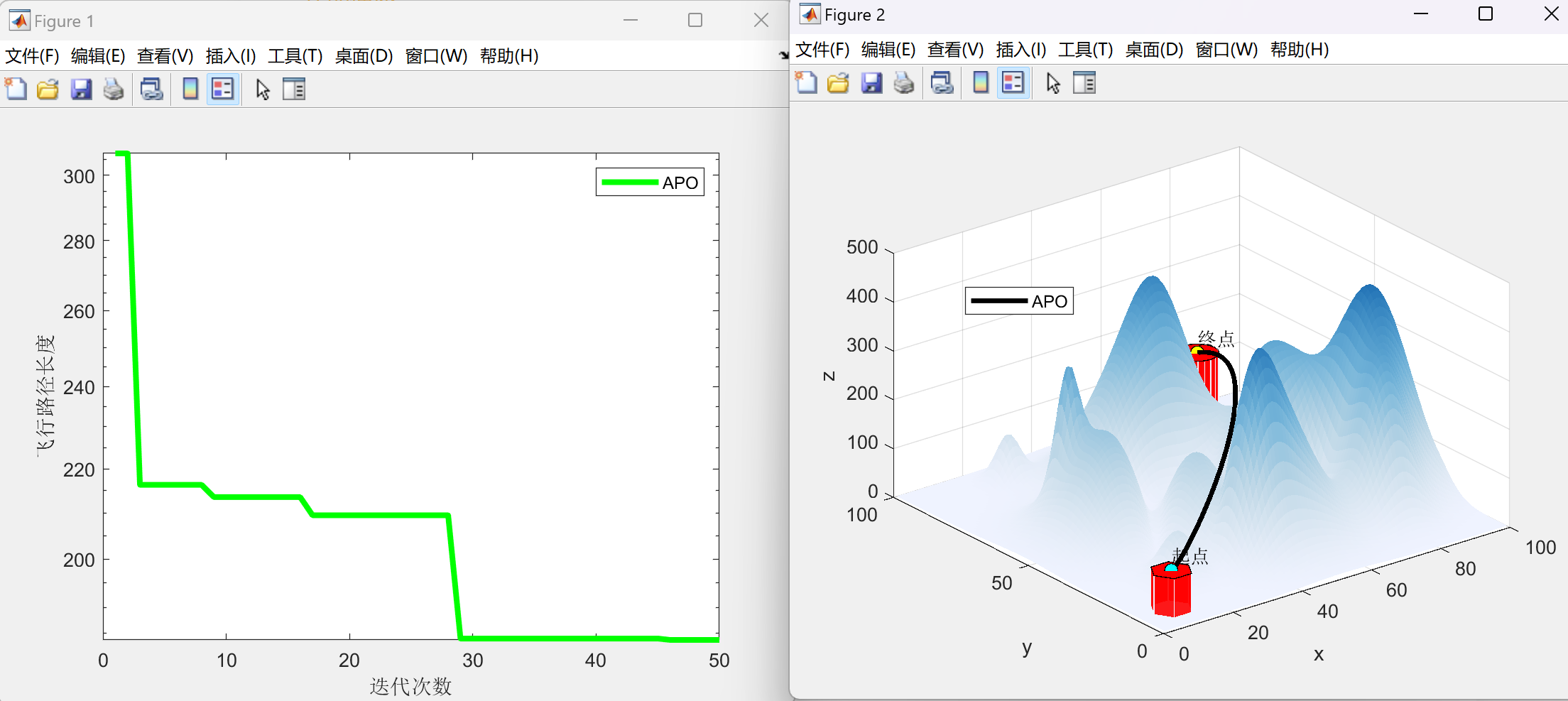oracle常用经典SQL查询(转贴)
oracle常用经典SQL查询
常用SQL查询:
1、查看表空间的名称及大小
select t.tablespace_name, round(sum(bytes/(1024*1024)),0) ts_size
from dba_tablespaces t, dba_data_files d
where t.tablespace_name = d.tablespace_name
group by t.tablespace_name;
2、查看表空间物理文件的名称及大小
select tablespace_name, file_id, file_name,
round(bytes/(1024*1024),0) total_space
from dba_data_files
order by tablespace_name;
3、查看回滚段名称及大小
select segment_name, tablespace_name, r.status,
(initial_extent/1024) InitialExtent,(next_extent/1024) NextExtent,
max_extents, v.curext CurExtent
From dba_rollback_segs r, v$rollstat v
Where r.segment_id = v.usn(+)
order by segment_name;
4、查看控制文件
select name from v$controlfile;
5、查看日志文件
select member from v$logfile;
6、查看表空间的使用情况
select sum(bytes)/(1024*1024) as free_space,tablespace_name
from dba_free_space
group by tablespace_name;
SELECT A.TABLESPACE_NAME,A.BYTES TOTAL,B.BYTES USED, C.BYTES FREE,
(B.BYTES*100)/A.BYTES "% USED",(C.BYTES*100)/A.BYTES "% FREE"
FROM SYS.***$TS_***AIL A,SYS.***$TS_USED B,SYS.***$TS_FREE C
WHERE A.TABLESPACE_NAME=B.TABLESPACE_NAME AND A.TABLESPACE_NAME=C.TABLESPACE_NAME;
7、查看数据库库对象
select owner, object_type, status, count(*) count# from all_objects group by owner, object_type, status;
8、查看数据库的版本
Select version FROM Product_component_version
Where SUBSTR(PRODUCT,1,6)=''Oracle'';
9、查看数据库的创建日期和归档方式
Select Created, Log_Mode, Log_Mode From V$Database;
10、捕捉运行很久的SQL
column username format a12
column opname format a16
column progress format a8
select username,sid,opname,
round(sofar*100 / totalwork,0) || ''%'' as progress,
time_remaining,sql_text
from v$session_longops , v$sql
where time_remaining <> 0
and sql_address = address
and sql_hash_value = hash_value
11。查看数据表的参数信息
SELECT partition_name, high_value, high_value_length, tablespace_name,
pct_free, pct_used, ini_trans, max_trans, initial_extent,
next_extent, min_extent, max_extent, pct_increase, FREELISTS,
freelist_groups, LOGGING, BUFFER_POOL, num_rows, blocks,
empty_blocks, ***g_space, chain_cnt, ***g_row_len, sample_size,
last_analyzed
FROM dba_tab_partitions
--WHERE table_name = :tname AND table_owner = :towner
ORDER BY partition_position
12.查看还没提交的事务
select * from v$locked_object;
select * from v$transaction;
13。查找object为哪些进程所用
select
p.spid,
s.sid,
s.serial# serial_num,
s.username user_name,
a.type object_type,
s.osuser os_user_name,
a.owner,
a.object object_name,
decode(sign(48 - command),
1,
to_char(command), ''Action Code #'' || to_char(command) ) action,
p.program oracle_process,
s.terminal terminal,
s.program program,
s.status session_status
from v$session s, v$access a, v$process p
where s.paddr = p.addr and
s.type = ''USER'' and
a.sid = s.sid and
a.object=''SUBSCRIBER_ATTR''
order by s.username, s.osuser
14。回滚段查看
select rownum, sys.dba_rollback_segs.segment_name Name, v$rollstat.extents
Extents, v$rollstat.rssize Size_in_Bytes, v$rollstat.xacts XActs,
v$rollstat.gets Gets, v$rollstat.waits Waits, v$rollstat.writes Writes,
sys.dba_rollback_segs.status status from v$rollstat, sys.dba_rollback_segs,
v$rollname where v$rollname.name(+) = sys.dba_rollback_segs.segment_name and
v$rollstat.usn (+) = v$rollname.usn order by rownum
15。耗资源的进程(top session)
select s.schemaname schema_name, decode(sign(48 - command), 1,
to_char(command), ''Action Code #'' || to_char(command) ) action, status
session_status, s.osuser os_user_name, s.sid, p.spid , s.serial# serial_num,
nvl(s.username, ''[Oracle process]'') user_name, s.terminal terminal,
s.program program, st.value criteria_value from v$sesstat st, v$session s , v$process p
where st.sid = s.sid and st.statistic# = to_number(''38'') and (''ALL'' = ''ALL''
or s.status = ''ALL'') and p.addr = s.paddr order by st.value desc, p.spid asc, s.username asc, s.osuser asc
16。查看锁(lock)情况
select /*+ RULE */ ls.osuser os_user_name, ls.username user_name,
decode(ls.type, ''RW'', ''Row wait enqueue lock'', ''TM'', ''DML enqueue lock'', ''TX'',
''Transaction enqueue lock'', ''UL'', ''User supplied lock'') lock_type,
o.object_name object, decode(ls.lmode, 1, null, 2, ''Row Share'', 3,
''Row Exclusive'', 4, ''Share'', 5, ''Share Row Exclusive'', 6, ''Exclusive'', null)
lock_mode, o.owner, ls.sid, ls.serial# serial_num, ls.id1, ls.id2
from sys.dba_objects o, ( select s.osuser, s.username, l.type,
l.lmode, s.sid, s.serial#, l.id1, l.id2 from v$session s,
v$lock l where s.sid = l.sid ) ls where o.object_id = ls.id1 and o.owner
<> ''SYS'' order by o.owner, o.object_name
17。查看等待(wait)情况
SELECT v$waitstat.class, v$waitstat.count count, SUM(v$sysstat.value) sum_value
FROM v$waitstat, v$sysstat WHERE v$sysstat.name IN (''db block gets'',
''consistent gets'') group by v$waitstat.class, v$waitstat.count
18。查看sga情况
SELECT NAME, BYTES FROM SYS.V_$SGASTAT ORDER BY NAME ASC
19。查看catched object
SELECT owner, name, db_link, namespace,
type, sharable_mem, loads, executions,
locks, pins, kept FROM v$db_object_cache
20。查看V$SQLAREA
SELECT SQL_TEXT, SHARABLE_MEM, PERSISTENT_MEM, RUNTIME_MEM, SORTS,
VERSION_COUNT, LOADED_VERSIONS, OPEN_VERSIONS, USERS_OPENING, EXECUTIONS,
USERS_EXECUTING, LOADS, FIRST_LOAD_TIME, INVALIDATIONS, PARSE_CALLS, DISK_READS,
BUFFER_GETS, ROWS_PROCESSED FROM V$SQLAREA
21。查看object分类数量
select decode (o.type#,1,''INDEX'' , 2,''TABLE'' , 3 , ''CLUSTER'' , 4, ''VIEW'' , 5 ,
''SYNONYM'' , 6 , ''SEQUENCE'' , ''OTHER'' ) object_type , count(*) quantity from
sys.obj$ o where o.type# > 1 group by decode (o.type#,1,''INDEX'' , 2,''TABLE'' , 3
, ''CLUSTER'' , 4, ''VIEW'' , 5 , ''SYNONYM'' , 6 , ''SEQUENCE'' , ''OTHER'' ) union select
''COLUMN'' , count(*) from sys.col$ union select ''DB LINK'' , count(*) from
22。按用户查看object种类
select u.name schema, sum(decode(o.type#, 1, 1, NULL)) indexes,
sum(decode(o.type#, 2, 1, NULL)) tables, sum(decode(o.type#, 3, 1, NULL))
clusters, sum(decode(o.type#, 4, 1, NULL)) views, sum(decode(o.type#, 5, 1,
NULL)) synonyms, sum(decode(o.type#, 6, 1, NULL)) sequences,
sum(decode(o.type#, 1, NULL, 2, NULL, 3, NULL, 4, NULL, 5, NULL, 6, NULL, 1))
others from sys.obj$ o, sys.user$ u where o.type# >= 1 and u.user# =
o.owner# and u.name <> ''PUBLIC'' group by u.name order by
sys.link$ union select ''CONSTRAINT'' , count(*) from sys.con$
23。有关connection的相关信息
1)查看有哪些用户连接
select s.osuser os_user_name, decode(sign(48 - command), 1, to_char(command),
''Action Code #'' || to_char(command) ) action, p.program oracle_process,
status session_status, s.terminal terminal, s.program program,
s.username user_name, s.fixed_table_sequence activity_meter, '''' query,
0 memory, 0 max_memory, 0 cpu_usage, s.sid, s.serial# serial_num
from v$session s, v$process p where s.paddr=p.addr and s.type = ''USER''
order by s.username, s.osuser
2)根据v.sid查看对应连接的资源占用等情况
select n.name,
v.value,
n.class,
n.statistic#
from v$statname n,
v$sesstat v
where v.sid = 71 and
v.statistic# = n.statistic#
order by n.class, n.statistic#
3)根据sid查看对应连接正在运行的sql
select /*+ PUSH_SUBQ */
command_type,
sql_text,
sharable_mem,
persistent_mem,
runtime_mem,
sorts,
version_count,
loaded_versions,
open_versions,
users_opening,
executions,
users_executing,
loads,
first_load_time,
invalidations,
parse_calls,
disk_reads,
buffer_gets,
rows_processed,
sysdate start_time,
sysdate finish_time,
''>'' || address sql_address,
''N'' status
from v$sqlarea
where address = (select sql_address from v$session where sid = 71)
24.查询表空间使用情况
select a.tablespace_name "表空间名称",
100-round((nvl(b.bytes_free,0)/a.bytes_alloc)*100,2) "占用率(%)",
round(a.bytes_alloc/1024/1024,2) "容量(M)",
round(nvl(b.bytes_free,0)/1024/1024,2) "空闲(M)",
round((a.bytes_alloc-nvl(b.bytes_free,0))/1024/1024,2) "使用(M)",
Largest "最大扩展段(M)",
to_char(sysdate,''yyyy-mm-dd hh24:mi:ss'') "采样时间"
from (select f.tablespace_name,
sum(f.bytes) bytes_alloc,
sum(decode(f.autoextensible,''YES'',f.maxbytes,''NO'',f.bytes)) maxbytes
from dba_data_files f
group by tablespace_name) a,
(select f.tablespace_name,
sum(f.bytes) bytes_free
from dba_free_space f
group by tablespace_name) b,
(select round(max(ff.length)*16/1024,2) Largest,
ts.name tablespace_name
from sys.fet$ ff, sys.file$ tf,sys.ts$ ts
where ts.ts#=ff.ts# and ff.file#=tf.relfile# and ts.ts#=tf.ts#
group by ts.name, tf.blocks) c
where a.tablespace_name = b.tablespace_name and a.tablespace_name = c.tablespace_name
- 查询表空间的碎片程度
select tablespace_name,count(tablespace_name) from dba_free_space group by tablespace_name
h***ing count(tablespace_name)>10;
alter tablespace name coalesce;
alter table name deallocate unused;
create or replace view ts_blocks_v as
select tablespace_name,block_id,bytes,blocks,''free space'' segment_name from dba_free_space
union all
select tablespace_name,block_id,bytes,blocks,segment_name from dba_extents;
select * from ts_blocks_v;
select tablespace_name,sum(bytes),max(bytes),count(block_id) from dba_free_space
group by tablespace_name;
26。查询有哪些数据库实例在运行
select inst_name from v$active_instances;
===========================================================
######### 创建数据库----look $ORACLE_HOME/rdbms/admin/buildall.sql #############
create database db01
maxlogfiles 10
maxdatafiles 1024
maxinstances 2
logfile
GROUP 1 (‘’/u01/oradata/db01/log_01_db01.rdo’‘) SIZE 15M,
GROUP 2 (’‘/u01/oradata/db01/log_02_db01.rdo’‘) SIZE 15M,
GROUP 3 (’‘/u01/oradata/db01/log_03_db01.rdo’‘) SIZE 15M,
datafile ‘‘u01/oradata/db01/system_01_db01.dbf’’) SIZE 100M,
undo tablespace UNDO
datafile ‘’/u01/oradata/db01/undo_01_db01.dbf’’ SIZE 40M
default temporary tablespace TEMP
tempfile ‘’/u01/oradata/db01/temp_01_db01.dbf’’ SIZE 20M
extent management local uniform size 128k
character set AL32UTE8
national character set AL16UTF16
set time_zone=‘‘America/New_York’’;
############### 数据字典 ##########
set wrap off
select * from v$dba_users;
grant select on table_name to user/rule;
select * from user_tables;
select * from all_tables;
select * from dba_tables;
revoke dba from user_name;
shutdown immediate
startup nomount
select * from v$instance;
select * from v$sga;
select * from v$tablespace;
alter session set nls_language=american;
alter database mount;
select * from v$database;
alter database open;
desc dictionary
select * from dict;
desc v$fixed_table;
select * from v$fixed_table;
set oracle_sid=foxconn
select * from dba_objects;
set serveroutput on
execute dbms_output.put_line(‘‘sfasd’’);
############# 控制文件 ###########
select * from v$database;
select * from v$tablespace;
select * from v$logfile;
select * from v$log;
select * from v$backup;
/备份用户表空间/
alter tablespace users begin backup;
select * from v$archived_log;
select * from v$controlfile;
alter system set control_files=‘‘ O R A C L E H O M E / o r a d a t a / u 01 / c t r l 01. c t l ′ ′ , ′ ′ ORACLE_HOME/oradata/u01/ctrl01.ctl'', '' ORACLEHOME/oradata/u01/ctrl01.ctl′′,′′ORACLE_HOME/oradata/u01/ctrl02.ctl’’ scope=spfile;
cp $ORACLE_HOME/oradata/u01/ctrl01.ctl $ORACLE_HOME/oradata/u01/ctrl02.ctl
startup pfile=‘’…/initSID.ora’’
select * from v$parameter where name like ‘‘control%’’ ;
show parameter control;
select * from v$controlfile_record_section;
select * from v$tempfile;
/备份控制文件/
alter database backup controlfile to ‘’…/filepath/control.bak’';
/备份控制文件,并将二进制控制文件变为了asc 的文本文件/
alter database backup controlfile to trace;
############### redo log ##############
archive log list;
alter system archive log start;–启动自动存档
alter system switch logfile;–强行进行一次日志switch
alter system checkpoint;–强制进行一次checkpoint
alter tablspace users begin backup;
alter tablespace offline;
/checkpoint 同步频率参数FAST_START_MTTR_TARGET,同步频率越高,系统恢复所需时间越短/
show parameter fast;
show parameter log_checkpoint;
/加入一个日志组/
alter database add logfile group 3 (‘’/$ORACLE_HOME/oracle/ora_log_file6.rdo’’ size 10M);
/加入日志组的一个成员/
alter database add logfile member ‘’/$ORACLE_HOME/oracle/ora_log_file6.rdo’’ to group 3;
/删除日志组:当前日志组不能删;活动的日志组不能删;非归档的日志组不能删/
alter database drop logfile group 3;
/删除日志组中的某个成员,但每个组的最后一个成员不能被删除/
alter databse drop logfile member ‘’$ORACLE_HOME/oracle/ora_log_file6.rdo’';
/清除在线日志/
alter database clear logfile ‘’$ORACLE_HOME/oracle/ora_log_file6.rdo’';
alter database clear logfile group 3;
/清除非归档日志/
alter database clear unarchived logfile group 3;
/重命名日志文件/
alter database rename file ‘‘ O R A C L E H O M E / o r a c l e / o r a l o g f i l e 6. r d o ′ ′ t o ′ ′ ORACLE_HOME/oracle/ora_log_file6.rdo'' to '' ORACLEHOME/oracle/oralogfile6.rdo′′to′′ORACLE_HOME/oracle/ora_log_file6a.rdo’’;
show parameter db_create;
alter system set db_create_online_log_dest_1=‘‘path_name’’;
select * from v$log;
select * from v$logfile;
/数据库归档模式到非归档模式的互换,要启动到mount状态下才能改变;startup mount;然后再打开数据库./
alter database noarchivelog/archivelog;
achive log start;—启动自动归档
alter system archive all;--手工归档所有日志文件
select * from v$archived_log;
show parameter log_archive;
分析日志文件logmnr
- 在init.ora中set utl_file_dir 参数
- 重新启动oracle
- create 目录文件
desc dbms_logmnr_d;
dbms_logmnr_d.build; - 加入日志文件 add/remove log file
dhms_logmnr.add_logfile
dbms_logmnr.removefile - start logmnr
dbms_logmnr.start_logmnr - 分析出来的内容查询 v$logmnr_content --sqlredo/sqlundo
实践:
desc dbms_logmnr_d;
/对数据表做一些操作,为恢复操作做准备/
update 表 set qty=10 where stor_id=6380;
delete 表 where stor_id=7066;
/***********************************/
utl_file_dir的路径
execute dbms_logmnr_d.build(‘‘foxdict.ora’’,‘’$ORACLE_HOME/oracle/admin/fox/cdump’');
execute dbms_logmnr.add_logfile(‘’$ORACLE_HOME/oracle/ora_log_file6.log’',dbms_logmnr.newfile);
execute dbms_logmnr.start_logmnr(dictfilename=>‘’$ORACLE_HOME/oracle/admin/fox/cdump/foxdict.ora’');
######### tablespace ##############
select * form v$tablespace;
select * from v$datafile;
/表空间和数据文件的对应关系/
select t1.name,t2.name from v t a b l e s p a c e t 1 , v tablespace t1,v tablespacet1,vdatafile t2 where t1.ts#=t2.ts#;
alter tablespace users add datafile ‘‘path’’ size 10M;
select * from dba_rollback_segs;
/限制用户在某表空间的使用限额/
alter user user_name quota 10m on tablespace_name;
create tablespace xxx [datafile ‘‘path_name/datafile_name’’] [size xxx] [extent management local/dictionary] [default storage(xxx)];
exmple: create tablespace userdata datafile ‘‘ O R A C L E H O M E / o r a d a t a / u s e r d a t a 01. d b f ′ ′ s i z e 100 M A U T O E X T E N D O N N E X T 5 M M A X S I Z E 200 M ; c r e a t e t a b l e s p a c e u s e r d a t a d a t a f i l e ′ ′ ORACLE_HOME/oradata/userdata01.dbf'' size 100M AUTOEXTEND ON NEXT 5M MAXSIZE 200M; create tablespace userdata datafile '' ORACLEHOME/oradata/userdata01.dbf′′size100MAUTOEXTENDONNEXT5MMAXSIZE200M;createtablespaceuserdatadatafile′′ORACLE_HOME/oradata/userdata01.dbf’’ size 100M extent management dictionary default storage(initial 100k next 100k pctincrease 10) offline;
/9i以后,oracle建议使用local管理,而不使用dictionary管理,因为local采用bitmap管理表空间 ,不会产生系统表空间的自愿争用;/
create tablespace userdata datafile ‘‘ O R A C L E H O M E / o r a d a t a / u s e r d a t a 01. d b f ′ ′ s i z e 100 M e x t e n t m a n a g e m e n t l o c a l u n i f o r m s i z e 1 m ; c r e a t e t a b l e s p a c e u s e r d a t a d a t a f i l e ′ ′ ORACLE_HOME/oradata/userdata01.dbf'' size 100M extent management local uniform size 1m; create tablespace userdata datafile '' ORACLEHOME/oradata/userdata01.dbf′′size100Mextentmanagementlocaluniformsize1m;createtablespaceuserdatadatafile′′ORACLE_HOME/oradata/userdata01.dbf’’ size 100M extent management local autoallocate;
/在创建表空间时,设置表空间内的段空间管理模式,这里用的是自动管理/
create tablespace userdata datafile ‘’$ORACLE_HOME/oradata/userdata01.dbf’’ size 100M extent management local uniform size 1m segment space management auto;
alter tablespace userdata mininum extent 10;
alter tablespace userdata default storage(initial 1m next 1m pctincrease 20);
/*undo tablespace(不能被用在字典管理模下) */
create undo tablespace undo1 datafile ‘’$ORACLE_HOME/oradata/undo101.dbf’’ size 40M extent management local;
show parameter undo;
/temporary tablespace/
create temporary tablespace userdata tempfile ‘’$ORACLE_HOME/oradata/undo101.dbf’’ size 10m extent management local;
/设置数据库缺省的临时表空间/
alter database default temporary tablespace tablespace_name;
/系统/临时/在线的undo表空间不能被offline/
alter tablespace tablespace_name offline/online;
alter tablespace tablespace_name read only;
/重命名用户表空间/
alter tablespace tablespace_name rename datafile ‘‘ O R A C L E H O M E / o r a d a t a / u n d o 101. d b f ′ ′ t o ′ ′ ORACLE_HOME/oradata/undo101.dbf'' to '' ORACLEHOME/oradata/undo101.dbf′′to′′ORACLE_HOME/oradata/undo102.dbf’’;
/重命名系统表空间 ,但在重命名前必须将数据库shutdown,并重启到mount状态/
alter database rename file ‘‘ O R A C L E H O M E / o r a d a t a / s y s t e m 01. d b f ′ ′ t o ′ ′ ORACLE_HOME/oradata/system01.dbf'' to '' ORACLEHOME/oradata/system01.dbf′′to′′ORACLE_HOME/oradata/system02.dbf’’;
drop tablespace userdata including contents and datafiles;—drop tablespce
/resize tablespace,autoextend datafile space/
alter database datafile ‘’$ORACLE_HOME/oradata/undo102.dbf’’ autoextend on next 10m maxsize 500M;
/resize datafile/
alter database datafile ‘’$ORACLE_HOME/oradata/undo102.dbf’’ resize 50m;
/给表空间扩展空间/
alter tablespace userdata add datafile ‘’$ORACLE_HOME/oradata/undo102.dbf’’ size 10m;
/将表空间设置成OMF状态/
alter system set db_create_file_dest=‘’$ORACLE_HOME/oradata’';
create tablespace userdata;—use OMF status to create tablespace;
drop tablespace userdata;—user OMF status to drop tablespace;
select * from dba_tablespace/v$tablespace/dba_data_files;
/将表的某分区移动到另一个表空间/
alter table table_name move partition partition_name tablespace tablespace_name;
ORACLE storage structure and relationships
/手工分配表空间段的分区(extend)大小/
alter table kong.test12 allocate extent(size 1m datafile ‘’$ORACLE_HOME/oradata/undo102.dbf’');
alter table kong.test12 deallocate unused; —释放表中没有用到的分区
show parameter db;
alter system set db_8k_cache_size=10m; —配置8k块的内存空间块参数
select * from dba_extents/dba_segments/data_tablespace;
select * from dba_free_space/dba_data_file/data_tablespace;
/数据对象所占用的字节数/
select sum(bytes) from dba_extents where onwer=‘‘kong’’ and segment_name =‘‘table_name’’;
############ UNDO Data ################
show parameter undo;
alter tablespace users offline normal;
alter tablespace users offline immediate;
recover datafile ‘’$ORACLE_HOME/oradata/undo102.dbf’';
alter tablespace users online ;
select * from dba_rollback_segs;
alter system set undo_tablespace=undotbs1;
/忽略回滚段的错误提示/
alter system set undo_suppress_errors=true;
/在自动管理模式下,不会真正建立rbs1;在手工管理模式则可以建立,且是私有回滚段/
create rollback segment rbs1 tablespace undotbs;
desc dbms_flashback;
/在提交了修改的数据后,9i提供了旧数据的回闪操作,将修改前的数据只读给用户看,但这部分数据不会又恢复在表中,而是旧数据的一个映射/
execute dbms_flashback.enable_at_time(‘‘26-JAN-04:12:17:00 pm’’);
execute dbms_flashback.disable;
/回滚段的统计信息/
select end_time,begin_time,undoblks from v$undostat;
/undo表空间的大小计算公式: UndoSpace=[UR * (UPS * DBS)] + (DBS * 24)
UR :UNDO_RETENTION 保留的时间(秒)
UPS :每秒的回滚数据块
DBS:系统EXTENT和FILE SIZE(也就是db_block_size)/
select * from dba_rollback_segs/v r o l l n a m e / v rollname/v rollname/vrollstat/v u n d o s t a t / v undostat/v undostat/vsession/v$transaction;
show parameter transactions;
show parameter rollback;
/在手工管理模式下,建立公共的回滚段/
create public rollback segment prbs1 tablespace undotbs;
alter rollback segment rbs1 online;----在手工管理模式
/*在手工管理模式中,initSID.ora中指定 undo_management=manual 、rollback_segment=(‘‘rbs1’’,‘‘rbs2’’,…)、
transactions=100 、transactions_per_rollback_segment=10
然后 shutdown immediate ,startup pfile=…???.ora */
########## Managing Tables ###########
/*char type maxlen=2000;varchar2 type maxlen=4000 bytes
rowid 是18位的64进制字符串 (10个bytes 80 bits)
rowid组成: object#(对象号)–32bits,6位
rfile#(相对文件号)–10bits,3位
block#(块号)–22bits,6位
row#(行号)–16bits,3位
64进制: A-Z,a-z,0-9,/,+ 共64个符号
dbms_rowid 包中的函数可以提供对rowid的解释*/
select rowid,dbms_rowid.rowid_block_number(rowid),dbms_rowid.rowid_row_number(rowid) from table_name;
create table test2
(
id int,
lname varchar2(20) not null,
fname varchar2(20) constraint ck_1 check(fname like ‘‘k%’’),
empdate date default sysdate)
) tablespace tablespace_name;
create global temporary table test2 on commit delete/preserve rows as select * from kong.authors;
create table user.table(…) tablespace tablespace_name storage(…) pctfree10 pctused 40;
alter table user.tablename pctfree 20 pctused 50 storage(…);—changing table storage
/手工分配分区,分配的数据文件必须是表所在表空间内的数据文件/
alter table user.table_name allocate extent(size 500k datafile ‘’…‘’);
/释放表中没有用到的空间/
alter table table_name deallocate unused;
alter table table_name deallocate unused keep 8k;
/将非分区表的表空间搬到新的表空间,在移动表空间后,原表中的索引对象将会不可用,必须重建/
alter table user.table_name move tablespace new_tablespace_name;
create index index_name on user.table_name(column_name) tablespace users;
alter index index_name rebuild;
drop table table_name [CASCADE CONSTRAINTS];
alter table user.table_name drop column col_name [CASCADE CONSTRAINTS CHECKPOINT 1000];—drop column
/给表中不用的列做标记/
alter table user.table_name set unused column comments CASCADE CONSTRAINTS;
/drop表中不用的做了标记列/
alter table user.table_name drop unused columns checkpoint 1000;
/当在drop col是出现异常,使用CONTINUE,防止重删前面的column/
ALTER TABLE USER.TABLE_NAME DROP COLUMNS CONTINUE CHECKPOINT 1000;
select * from dba_tables/dba_objects;
######## managing indexes ##########
/create index/
example:
/创建一般索引/
create index index_name on table_name(column_name) tablespace tablespace_name;
/创建位图索引/
create bitmap index index_name on table_name(column_name1,column_name2) tablespace tablespace_name;
/索引中不能用pctused/
create [bitmap] index index_name on table_name(column_name) tablespace tablespace_name pctfree 20 storage(inital 100k next 100k) ;
/大数据量的索引最好不要做日志/
create [bitmap] index index_name table_name(column_name1,column_name2) tablespace_name pctfree 20 storage(inital 100k next 100k) nologging;
/创建反转索引/
create index index_name on table_name(column_name) reverse;
/创建函数索引/
create index index_name on table_name(function_name(column_name)) tablespace tablespace_name;
/建表时创建约束条件/
create table user.table_name(column_name number(7) constraint constraint_name primary key deferrable using index storage(initial 100k next 100k) tablespace tablespace_name,column_name2 varchar2(25) constraint constraint_name not null,column_name3 number(7)) tablespace tablespace_name;
/给创建bitmap index分配的内存空间参数,以加速建索引/
show parameter create_bit;
/改变索引的存储参数/
alter index index_name pctfree 30 storage(initial 200k next 200k);
/给索引手工分配一个分区/
alter index index_name allocate extent (size 200k datafile ‘’$ORACLE/oradata/…‘’);
/释放索引中没用的空间/
alter index index_name deallocate unused;
/索引重建/
alter index index_name rebuild tablespace tablespace_name;
/普通索引和反转索引的互换/
alter index index_name rebuild tablespace tablespace_name reverse;
/重建索引时,不锁表/
alter index index_name rebuild online;
/给索引整理碎片/
alter index index_name COALESCE;
/分析索引,事实上是更新统计的过程/
analyze index index_name validate structure;
desc index_state;
drop index index_name;
alter index index_name monitoring usage;-----监视索引是否被用到
alter index index_name nomonitoring usage;----取消监视
/有关索引信息的视图/
select * from dba_indexes/dba_ind_columns/dbs_ind_expressions/v$object_usage;
########## 数据完整性的管理(Maintaining data integrity) ##########
alter table table_name drop constraint constraint_name;----drop 约束
alter table table_name add constraint constraint_name primary key(column_name1,column_name2);-----创建主键
alter table table_name add constraint constraint_name unique(column_name1,column_name2);—创建唯一约束
/创建外键约束/
alter table table_name add constraint constraint_name foreign key(column_name1) references table_name(column_name1);
/不效验老数据,只约束新的数据[enable/disable:约束/不约束新数据;novalidate/validate:不对/对老数据进行验证]/
alter table table_name add constraint constraint_name check(column_name like ‘‘B%’’) enable/disable novalidate/validate;
/修改约束条件,延时验证,commit时验证/
alter table table_name modify constraint constraint_name initially deferred;
/修改约束条件,立即验证/
alter table table_name modify constraint constraint_name initially immediate;
alter session set constraints=deferred/immediate;
/drop一个有外键的主键表,带cascade constraints参数级联删除/
drop table table_name cascade constraints;
/当truncate外键表时,先将外键设为无效,再truncate;/
truncate table table_name;
/设约束条件无效/
alter table table_name disable constraint constraint_name;
alter table table_name enable novalidate constraint constraint_name;
/将无效约束的数据行放入exception的表中,此表记录了违反数据约束的行的行号;在此之前,要先建exceptions表/
alter table table_name add constraint constraint_name check(column_name >15) enable validate exceptions into exceptions;
/运行创建exceptions表的脚本/
start $ORACLE_HOME/rdbms/admin/utlexcpt.sql;
/获取约束条件信息的表或视图/
select * from user_constraints/dba_constraints/dba_cons_columns;
################## managing password security and resources ####################
alter user user_name account unlock/open;----锁定/打开用户;
alter user user_name password expire;—设定口令到期
/建立口令配置文件,failed_login_attempts口令输多少次后锁,password_lock_times指多少天后口令被自动解锁/
create profile profile_name limit failed_login_attempts 3 password_lock_times 1/1440;
/创建口令配置文件/
create profile profile_name limit failed_login_attempts 3 password_lock_time unlimited password_life_time 30 password_reuse_time 30 password_verify_function verify_function password_grace_time 5;
/建立资源配置文件/
create profile prfile_name limit session_per_user 2 cpu_per_session 10000 idle_time 60 connect_time 480;
alter user user_name profile profile_name;
/设置口令解锁时间/
alter profile profile_name limit password_lock_time 1/24;
/password_life_time指口令文件多少时间到期,password_grace_time指在第一次成功登录后到口令到期有多少天时间可改变口令/
alter profile profile_name limit password_lift_time 2 password_grace_time 3;
/password_reuse_time指口令在多少天内可被重用,password_reuse_max口令可被重用的最大次数/
alter profile profile_name limit password_reuse_time 10[password_reuse_max 3];
alter user user_name identified by input_password;-----修改用户口令
drop profile profile_name;
/建立了profile后,且指定给某个用户,则必须用CASCADE才能删除/
drop profile profile_name CASCADE;
alter system set resource_limit=true;—启用自愿限制,缺省是false
/配置资源参数/
alter profile profile_name limit cpu_per_session 10000 connect_time 60 idle_time 5;
/*资源参数(session级)
cpu_per_session 每个session占用cpu的时间 单位1/100秒
sessions_per_user 允许每个用户的并行session数
connect_time 允许连接的时间 单位分钟
idle_time 连接被空闲多少时间后,被自动断开 单位分钟
logical_reads_per_session 读块数
***_sga 用户能够在SGA中使用的私有的空间数 单位bytes
(call级)
cpu_per_call 每次(1/100秒)调用cpu的时间
logical_reads_per_call 每次调用能够读的块数
*/
alter profile profile_name limit cpu_per_call 1000 logical_reads_per_call 10;
desc dbms_resouce_manager;—资源管理器包
/获取资源信息的表或视图/
select * from dba_users/dba_profiles;
Managing users
show parameter os;
create user testuser1 identified by kxf_001;
grant connect,createtable to testuser1;
alter user testuser1 quota 10m on tablespace_name;
/创建用户/
create user user_name identified by password default tablespace tablespace_name temporary tablespace tablespace_name quota 15m on tablespace_name password expire;
/数据库级设定缺省临时表空间/
alter database default temporary tablespace tablespace_name;
/制定数据库级的缺省表空间/
alter database default tablespace tablespace_name;
/*创建os级审核的用户,需知道os_authent_prefix,表示oracle和os口令对应的前缀,''OPS ′ ′ 为此参数的值,此值可以任意设置 ∗ / c r e a t e u s e r u s e r n a m e i d e n t i f i e d b y e x t e r n a l l y d e f a u l t O P S ''为此参数的值,此值可以任意设置*/ create user user_name identified by externally default OPS ′′为此参数的值,此值可以任意设置∗/createuserusernameidentifiedbyexternallydefaultOPStablespace_name tablespace_name temporary tablespace tablespace_name quota 15m on tablespace_name password expire;
/修改用户使用表空间的限额,回滚表空间和临时表空间不允许授予限额/
alter user user_name quota 5m on tablespace_name;
/删除用户或删除级联用户(用户对象下有对象的要用CASCADE,将其下一些对象一起删除)/
drop user user_name [CASCADE];
/每个用户在哪些表空间下有些什么限额/
desc dba_ts_quotas;select * from dba_ts_quotas where username=‘’…‘’;
/改变用户的缺省表空间/
alter user user_name default tablespace tablespace_name;
######### Managing Privileges #############
grant create table,create session to user_name;
grant create any table to user_name; revoke create any table from user_name;
/授予权限语法,public 标识所有用户,with admin option允许能将权限授予第三者的权限/
grant system_privs,[…] to [user/role/public],[…] [with admin option];
select * from v$pwfile_users;
/当 O7_dictionary_accessiblity参数为True时,标识select any table时,包括系统表也能select ,否则,不包含系统表;缺省为false/
show parameter O7;
/由于 O7_dictionary_accessiblity为静态参数,不能动态改变,故加scope=spfile,下次启动时才生效/
alter system set O7_dictionary_accessiblity=true scope=spfile;
/授予对象中的某些字段的权限,如select 某表中的某些字段的权限/
grant [object_privs(column,…)],[…] on object_name to user/role/public,… with grant option;
/oracle不允许授予select某列的权限,但可以授insert ,update某列的权限/
grant insert(column_name1,column_name2,…) on table_name to user_name with grant option;
select * from dba_sys_privs/session_privs/dba_tab_privs/user_tab_privs/dba_col_privs/user_col_privs;
/db/os/none 审计被记录在 数据库/操作系统/不审计 缺省是none/
show parameter audit_trail;
/启动对表的select动作/
audit select on user.table_name by session;
/by session在每个session中发出command只记录一次,by access则每个command都记录/
audit [create table][select/update/insert on object by session/access][whenever successful/not successful];
desc dbms_fga;—进一步设计,则可使用dbms_fgs包
/取消审计/
noaudit select on user.table_name;
/查被审计信息/
select * from all_def_audit_opts/dba_stmt_audit_opts/dba_priv_audit_opts/dba_obj_audit_opts;
/获取审计记录/
select * from dba_audit_trail/dba_audit_exists/dba_audit_object/dba_audit_session/dba_audit_statement;
########### Managing Role #################
create role role_name; grant select on table_name to role_name; grant role_name to user_name; set role role_name;
create role role_name;
create role role_name identified by password;
create role role_name identified externally;
set role role_name ; ----激活role
set role role_name identified by password;
alter role role_name not identified;
alter role role_name identified by password;
alter role role_name identified externally;
grant priv_name to role_name [WITH ADMIN OPTION];
grant update(column_name1,col_name2,…) on table_name to role_name;
grant role_name1 to role_name2;
/建立default role,用户登录时,缺省激活default role/
alter user user_name default role role_name1,role_name2,…;
alter user user_name default role all;
alter user user_name default role all except role_name1,…;
alter user user_name default role none;
set role role1 [identified by password],role2,…;
set role all;
set role except role1,role2,…;
set role none;
revoke role_name from user_name;
revoke role_name from public;
drop role role_name;
select * from dba_roles/dba_role_privs/role_role_privs/dba_sys_privs/role_sys_privs/role_tab_privs/session_roles;
########### Basic SQL SELECT ################
select col_name as col_alias from table_name ;
select col_name from table_name where col1 like '‘o%‘’; ----‘’’'匹配单个字符
/使用字符函数(右边截取,字段中包含某个字符,左边填充某字符到固定位数,右边填充某字符到固定位数)/
select substr(col1,-3,5),instr(col2,‘‘g’’),LPAD(col3,10,‘’$‘’),RPAD(col4,10,‘’%‘’) from table_name;
/使用数字函数(往右/左几位四舍五入,取整,取余)/
select round(col1,-2),trunc(col2),mod(col3) from table_name ;
/使用日期函数(计算两个日期间相差几个星期,两个日期间相隔几个月,在某个月份上加几个月,某个日期的下一个日期,
某日期所在月的最后的日期,对某个日期的月分四舍五入,对某个日期的月份进行取整)/
select (sysdate-col1)/7 week,months_between(sysdate,col1),add_months(col1,2),next_day(sysdate,‘‘FRIDAY’’),last_day(sysdate),
round(sysdate,‘‘MONTH’’),trunc(sysdate,‘‘MONTH’’) from table_name;
/使用NULL函数(当expr1为空取expr2/当expr1为空取expr2,否则取expr3/当expr1=expr2返回空)/
select nvl(expr1,expr2),nvl2(expr1,expr2,expr3),nullif(expr1,expr2) from table_name;
select column1,column2,column3, case column2 when ‘‘50’’ then column21.1
when ‘‘30’’ then column22.1
when ‘‘10’’ then column3/20
else column3
end as ttt
from table_name ; ------使用case函数
select table1.col1,table2.col2 from table1
[CROSS JOIN table2] | -----笛卡儿连接
[NATURAL JOIN table2] | -----用两个表中的同名列连接
[JOIN table2 USING (column_name)] | -----用两个表中的同名列中的某一列或几列连接
[JOIN table2
ON (table1.col1=table2.col2)] |
[LEFT|RIGHT|FULL OUTER JOIN table2 ------相当于(+)=,=(+)连接,全外连接
ON (table1.col1=table2.col2)]; ------SQL 1999中的JOIN语法;
example:
select col1,col2 from table1 t1
join table2 t2
on t1.col1=t2.col2 and t1.col3=t2.col1
join table3 t3
on t2.col1=t3.col3;
select * from table_name where col1 < any (select col2 from table_name2 where continue group by col3);
select * from table_name where col1 < all (select col2 from table_name2 where continue group by col3);
insert into (select col1,col2,col3 form table_name where col1> 50 with check option) values (value1,value2,value3);
MERGE INTO table_name table1
USING table_name2 table2
ON (table1.col1=table2.col2)
WHEN MATCHED THEN
UPDATE SET
table1.col1=table2.col2,
table1.col2=table2.col3,
…
WHEN NOT MATCHED THEN
INSERT VALUES(table2.col1,table2.col2,table2.col3,…); -----合并语句
##################### CREATE/ALTER TABLE #######################
alter table table_name drop column column_name ;—drop column
alter table table_name set unused (col1,col2,…);----设置列无效,这个比较快。
alter table table_name drop unused columns;—删除被设为无效的列
rename table_name1 to table_name2; —重命名表
comment on table table_name is ‘‘comment message’’;----给表放入注释信息
create table table_name
(col1 int not null,col2 varchar2(20),col3 varchar2(20),
constraint uk_test2_1 unique(col2,col3))); -----定义表中的约束条件
alter table table_name add constraint pk_test2 primary key(col1,col2,…); ----创建主键
/建立外键/
create table table_name (rid int,name varchar2(20),constraint fk_test3 foreign key(rid) references other_table_name(id));
alter table table_name add constraint ck_test3 check(name like ‘‘K%’’);
alter table table_name drop constraint constraint_name;
alter table table_name drop primary key cascade;----级联删除主键
alter table table_name disable/enable constraint constraint_name;----使约束暂时无效
/删除列,并级联删除此列下的约束条件/
alter table table_name drop column column_name cascade constraint;
select * from user_constraints/user_cons_columns;—约束条件相关视图
############## Create Views #####################
CREATE [OR REPLACE] [FORCE|NOFORCE] VIEW view_name [(alias[,alias]…)]
AS subquery
[WITH CHECK OPTION [CONSTRAINT constraint_name]]
[WITH READ ONLY [CONSTRAINT constraint_name]]; ------创建视图的语法
example: Create or replace view testview as select col1,col2,col3 from table_name; ------创建视图
/使用别名/
Create or replace view testview as select col1,sum(col2) col2_alias from table_name;
/创建复杂视图/
Create view view_name (alias1,alias2,alias3,alias4) as select d.col1,min(e.col1),max(e.col1),***g(e.col1) from table_name1 e,table_name2 d where e.col2=d.col2 group by d.col1;
/当用update修改数据时,必须满足视图的col1>10的条件,不满足则不能被改变./
Create or replace view view_name as select * from table_name where col1>10 with check option;
/改变视图的值.对于简单视图可以用update语法修改表数据,但复杂视图则不一定能改。如使用了函数,group by ,distinct等的列/
update view_name set col1=value1;
/TOP-N分析/
select [column_list],rownum from (select [column_list] from table_name order by Top-N_column) where rownum<=N;
/找出某列三条最大值的记录/
example: select rownum as rank ,col1 ,col2 from (select col1 ,col2 from table_name order by col2 desc) where rownum<=3;
############# Other database Object ###############
CREATE SEQUENCE sequence_name [INCREMENT BY n]
[START WITH n]
[{MAXVALUE n | NOMAXVALUE}]
[{MINVALUE n | NOMINVALUE}]
[{CYCEL | NOCYCLE}]
[{CACHE n | NOCACHE}]; -----创建SEQUENCE
example:
CREATE SEQUENCE sequence_name INCREMENT BY 10
START WITH 120
MAXVALUE 9999
NOCACHE
NOCYCLE;
select * from user_sequences ;—当前用户下记录sequence的视图
select sequence_name.nextval,sequence_name.currval from dual;-----sequence的引用
alter sequence sequence_name INCREMENT BY 20
MAXVALUE 999999
NOCACHE
NOCYCLE; -----修改sequence,不能改变起始序号
drop sequence sequence_name; ----删除sequence
CREATE [PUBLIC] SYNONYM synonym_name FOR object; ------创建同义词
DROP [PUBLIC] SYNONYM synonym_name;----删除同义词
CREATE PUBLIC DATABASE LINK link_name USEING OBJECT;----创建DBLINK
select * from object_name@link_name; ----访问远程数据库中的对象
/union 操作,它将两个集合的交集部分压缩,并对数据排序/
select col1,col2,col3 from table1_name union select col1,col2,col3 from table2_name;
/union all 操作,两个集合的交集部分不压缩,且不对数据排序/
select col1,col2,col3 from table1_name union all select col1,col2,col3 from table2_name;
/intersect 操作,求两个集合的交集,它将对重复数据进行压缩,且排序/
select col1,col2,col3 from table1_name intersect select col1,col2,col3 from table2_name;
/minus 操作,集合减,它将压缩两个集合减后的重复记录, 且对数据排序/
select col1,col2,col3 from table1_name minus select col1,col2,col3 from table2_name;
/EXTRACT 抽取时间函数. 此例是抽取当前日期中的年/
select EXTRACT(YEAR FROM SYSDATE) from dual;
/EXTRACT 抽取时间函数. 此例是抽取当前日期中的月/
select EXTRACT(MONTH FROM SYSDATE) from dual;
########################## 增强的 group by 子句 #########################
select [column,] group_function(column)…
from table
[WHERE condition]
[GROUP BY [ROLLUP] group_by_expression]
[HING hing_expression];
[ORDER BY column]; -------ROLLUP操作字,对group by子句的各字段从右到左进行再聚合
example:
/其结果看起来象对col1做小计/
select col1,col2,sum(col3) from table group by rollup(col1,col2);
/复合rollup表达式/
select col1,col2,sum(col3) from table group by rollup((col1,col2));
select [column,] group_function(column)…
from table
[WHERE condition]
[GROUP BY [CUBE] group_by_expression]
[HING hing_expression];
[ORDER BY column]; -------CUBE操作字,除完成ROLLUP的功能外,再对ROLLUP后的结果集从右到左再聚合
example:
/其结果看起来象对col1做小计后,再对col2做小计,最后算总计/
select col1,col2,sum(col3) from table group by cube(col1,col2);
/复合rollup表达式/
select col1,col2,sum(col3) from table group by cube((col1,col2));
/混合rollup,cube表达式/
select col1,col2,col3,sum(col4) from table group by col1,rollup(col2),cube(col3);
/GROUPING(expr)函数,查看select语句种以何字段聚合,其取值为0或1/
select [column,] group_function(column)…,GROUPING(expr)
from table
[WHERE condition]
[GROUP BY [ROLLUP] group_by_expression]
[HING hing_expression];
[ORDER BY column];
example:
select col1,col2,sum(col3),grouping(col1),grouping(col2) from table group by cube(col1,col2);
/grouping sets操作,对group by结果集先对col1求和,再对col2求和,最后将其结果集并在一起/
select col1,col2,sum(col3) from table group by grouping sets((col1),(col2));




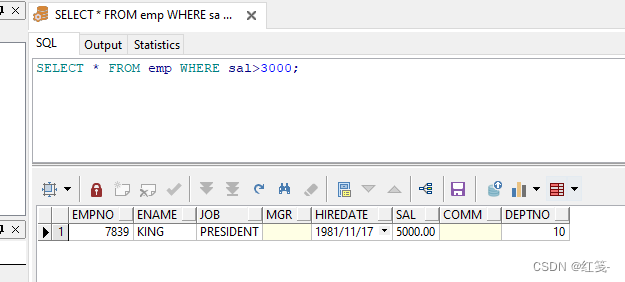

















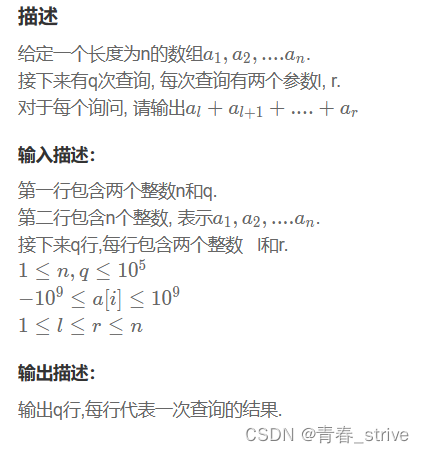

![Error: [WinError 2] 系統找不到指定的檔案](https://img-blog.csdnimg.cn/direct/d0a28c764e52492b841629328aed9caf.png)





